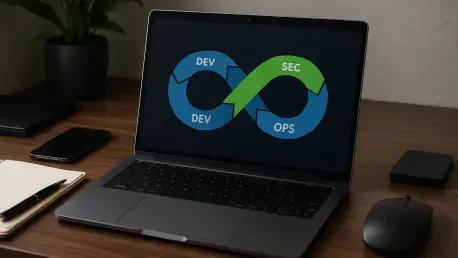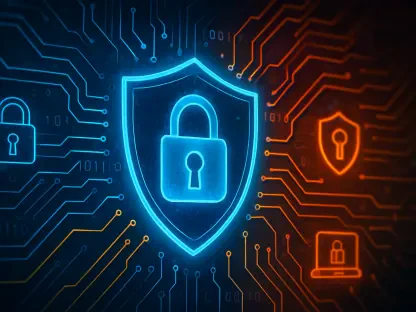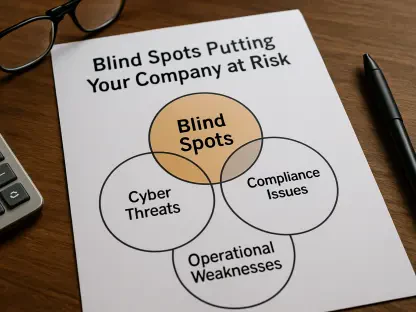In the relentless race of software development, balancing speed with robust security remains a daunting challenge for many organizations, as teams are under constant pressure to deliver innovative solutions quickly. Yet, the specter of vulnerabilities looms large, threatening to derail projects and expose critical systems. DevSecOps, a methodology pioneered by Shannon Lietz during her time at Adobe, offers a compelling answer by embedding security into every phase of the development lifecycle—a strategy often dubbed “shifting left.” This approach aims to catch issues early, long before they morph into costly breaches. However, despite its clear advantages on paper, putting DevSecOps into action often stumbles over practical hurdles like misaligned priorities and difficulty in justifying the investment. So, how can these gaps be bridged effectively? Artificial intelligence (AI) emerges as a powerful ally, promising to automate repetitive tasks, sharpen threat detection, and streamline workflows. But can it truly revolutionize this space, or are there unseen risks waiting to surface?
Unleashing AI’s Potential in DevSecOps
Streamlining Repetitive Processes
AI’s most immediate impact on DevSecOps lies in its ability to take over the mundane, time-consuming tasks that often bog down development teams. Processes such as static code analysis, vulnerability scanning, and compliance verification can be transformed through machine learning algorithms that process vast amounts of data with remarkable speed. Tools leveraging AI are designed to not only identify weaknesses but also prioritize them based on severity, offering actionable recommendations for remediation. This automation slashes the time spent on manual reviews, enabling developers to focus on crafting innovative features rather than wrestling with endless checklists. The result is a pipeline that moves faster, with fewer human errors creeping into the mix, paving the way for releases that are both swift and secure. As organizations grapple with tight deadlines, this capability becomes a cornerstone for maintaining a competitive edge without sacrificing safety.
Moreover, the scope of AI-driven automation extends beyond mere detection to encompass broader pipeline monitoring and regression testing. By integrating these intelligent systems, teams can ensure that each code update undergoes rigorous scrutiny without slowing down the delivery schedule. This is particularly vital in environments where continuous integration and deployment are the norm, as even minor oversights can cascade into significant setbacks. AI’s knack for consistency means that repetitive checks are executed with precision every time, reducing the likelihood of overlooked flaws. Additionally, the data gathered during these automated processes can feed into analytics, providing insights that help refine future development cycles. For teams striving to balance agility with robust security, this level of efficiency offers a tangible boost, ensuring that the principles of DevSecOps are not just theoretical ideals but practical realities.
Enhancing Real-Time Threat Identification
Another transformative aspect of AI in DevSecOps is its capacity to spot potential threats before they escalate into full-blown crises. By continuously analyzing security logs, system metrics, and incoming alerts, AI-powered tools can detect anomalies that might signal an impending attack. These systems excel at connecting disparate data points, identifying patterns that human analysts might miss under the weight of information overload. Solutions built on such technology enable rapid response mechanisms, allowing security teams to neutralize risks at their inception. This proactive stance shifts the paradigm from reactive firefighting to strategic prevention, a critical advantage in an era where cyber threats grow increasingly sophisticated and frequent.
Furthermore, the integration of AI for threat detection fosters a more resilient development environment by aligning closely with the continuous monitoring ethos of DevSecOps. As software evolves through frequent updates, the attack surface expands, creating new vulnerabilities that demand immediate attention. AI’s ability to adapt and learn from evolving threat landscapes ensures that defenses remain relevant, even as attackers refine their tactics. This dynamic vigilance helps safeguard not just the code but also the broader infrastructure, including cloud environments and third-party integrations. By embedding such intelligence into the pipeline, organizations can reduce the window of exposure, minimizing damage and maintaining trust with stakeholders. The endgame is a fortified process where security isn’t a bottleneck but a seamless component of delivery.
Navigating the Risks and Realities of AI Integration
Maintaining Human Judgment in the Loop
While AI brings undeniable efficiency to DevSecOps, leaning too heavily on it without adequate human oversight can lead to unexpected pitfalls. Machine learning models, though powerful, are not infallible and often struggle with nuanced scenarios or edge cases that fall outside their training data. A notable critique from Daniel Stenberg, the maintainer of cURL, highlights how AI-generated bug reports can lack context, creating more noise than value for developers. Such instances underscore the danger of treating AI as a standalone solution rather than a supportive tool. Human expertise remains essential to interpret results, validate findings, and make informed decisions, ensuring that automated outputs align with the project’s unique needs and constraints.
Equally important is the recognition that AI’s errors can sometimes mirror or amplify human mistakes if not properly managed. Without a guiding hand, automated systems might prioritize irrelevant issues or overlook critical vulnerabilities due to algorithmic blind spots. This necessitates a hybrid approach where AI handles high-volume, repetitive tasks while skilled professionals step in for strategic oversight and complex problem-solving. Training teams to work alongside AI, rather than deferring entirely to it, builds a balanced workflow that leverages the strengths of both. By fostering this synergy, organizations can harness AI’s speed and scale while preserving the critical thinking that only humans can provide, ultimately creating a more robust and reliable DevSecOps pipeline.
Defining AI’s Optimal Scope
On the other hand, when AI is deployed for specific, well-defined tasks, its value becomes strikingly apparent. A positive perspective from Sasha Levin, a Linux kernel hacker, illustrates how AI excels in focused roles, such as pinpointing particular types of bugs or automating routine patches. This targeted application ensures that the technology complements rather than competes with human efforts, delivering measurable improvements without overstepping its capabilities. Organizations like Wipro and the U.S. Department of Defense have successfully adopted this strategy, integrating AI into their continuous integration and deployment pipelines to enhance cloud security and compliance with minimal friction.
Additionally, defining a clear scope for AI helps mitigate risks associated with overambition or misuse in DevSecOps frameworks. By limiting its role to areas like automated risk assessments or securing infrastructure-as-code tools on major cloud platforms, teams can avoid the pitfalls of vague or overly broad implementations. This disciplined approach also facilitates better alignment with regulatory standards, such as GDPR, by ensuring that AI-driven processes are transparent and accountable. The success stories from various sectors demonstrate that a cautious, structured integration of AI can yield significant benefits, from faster threat mitigation to streamlined audits. Ultimately, the key lies in striking a balance—using AI as a precision tool to augment human capabilities rather than as a catch-all solution.
Reflecting on AI’s Role in Secure Development
Looking back, the journey of integrating AI into DevSecOps pipelines reveals both remarkable strides and sobering lessons for the software development community. The automation of labor-intensive tasks like code analysis and vulnerability scanning marked a significant leap forward, allowing teams to deliver releases with unprecedented speed and fewer flaws. Meanwhile, AI’s knack for real-time threat detection proved instrumental in shifting security from a reactive burden to a proactive shield. Yet, the missteps—such as over-reliance on automation without human input—serve as stark reminders that technology alone cannot solve every challenge. Moving forward, the focus should shift to crafting hybrid models where AI’s efficiency pairs with human insight, ensuring that pipelines remain both agile and secure. Investing in training to bridge skill gaps and refining AI tools for precision will be crucial steps to solidify this partnership, paving the way for a future where security seamlessly fuels innovation.









